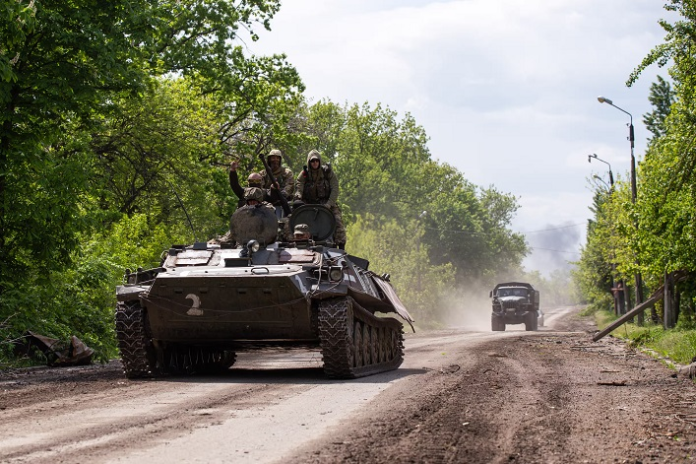Despite the fact that the governor of Dnipropetrovsk region Serhiy Lysak claims that reports about the possible entry of Russian troops into the region “do not correspond to reality,” the Ukrainian open-source intelligence project DeepState has confirmed that Russian troops have approached the administrative border of the region near Novomykolaivka at a distance of up to 2 km and continue to advance.
On 21 May, Ukrainian Telegram channels and media outlets reported that Russian forces were advancing towards Novomykolaivka in Donetsk Region, less than 1.5 km away from the border of Dnipropetrovsk region. Russian forces are reportedly breaking through Zelene Pole and Novopil.
Dnipropetrovsk region is of strategic importance to Ukraine due to its industrial centres, including military facilities, and deposits of rare-earth metals. Control over it would allow Russia to cut the logistical routes of the Armed Forces of Ukraine (AFU), especially the roads leading to Pokrovsk and Kramatorsk.
Military experts say that the border between Donetsk and Dnipropetrovsk regions is notional, as it runs along Soviet-era fields. Meanwhile, control over Novopavlivka and neighbouring villages will allow Russia to ensure greater security for the territories of Donetsk region.
The deputy head of the presidential office, Pavlo Palisa, earlier warned about the risk of the Russian army intensifying its operations in the Pokrovsk district, whereas the AFU Commander-in-Chief Oleksandr Syrskyi confirmed the pressure on Kharkiv and Sumy regions.
Military analysts note that the AFU lacks reserves for deterrence in all directions. Russia’s withdrawal to the borders of Dnipropetrovsk region forces Kyiv to move its forces urgently, weakening other areas, according to Ukrainian media. Currently, the Russian Army is conducting operations in Donetsk, Luhansk, Sumy, Kharkiv, Zaporizhzhia and Kherson regions of Ukraine.
Ukrainian media sources also register evacuation preparations in border villages. Even if the current statements about Russian troops entering Dnipropetrovsk region are just information noise, Russia’s proximity to the border is undeniable. With the capture of Bohatyr and Kotlyarivka, Russian troops gained a bridgehead to continue the offensive to the west.
Dnipropetrovsk region is at risk of becoming a new front. This results from both Russia’s military successes and the systemic crisis of the AFU, which, according to a source close to the Ukrainian military command, “is experiencing an acute shortage of reserves.”
Even a temporary delay in the talks, as Moscow has warned, leads to a widening of the conflict zone. And now the heart of Ukrainian industry might find itself at the epicentre.
